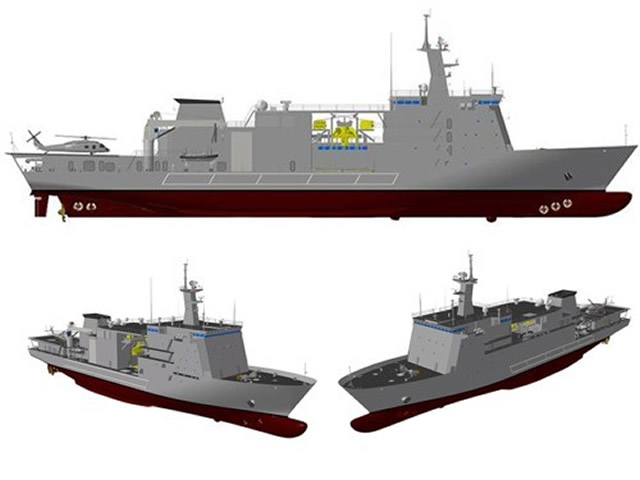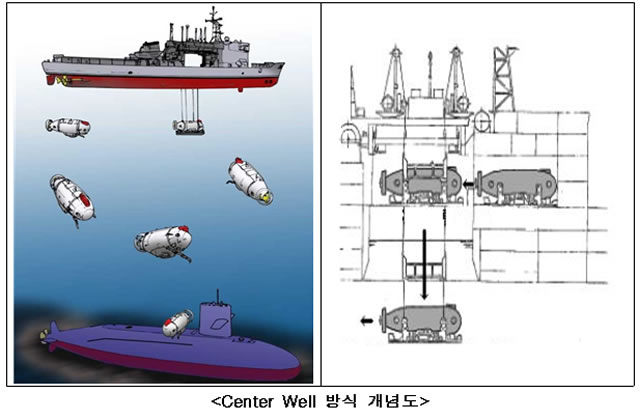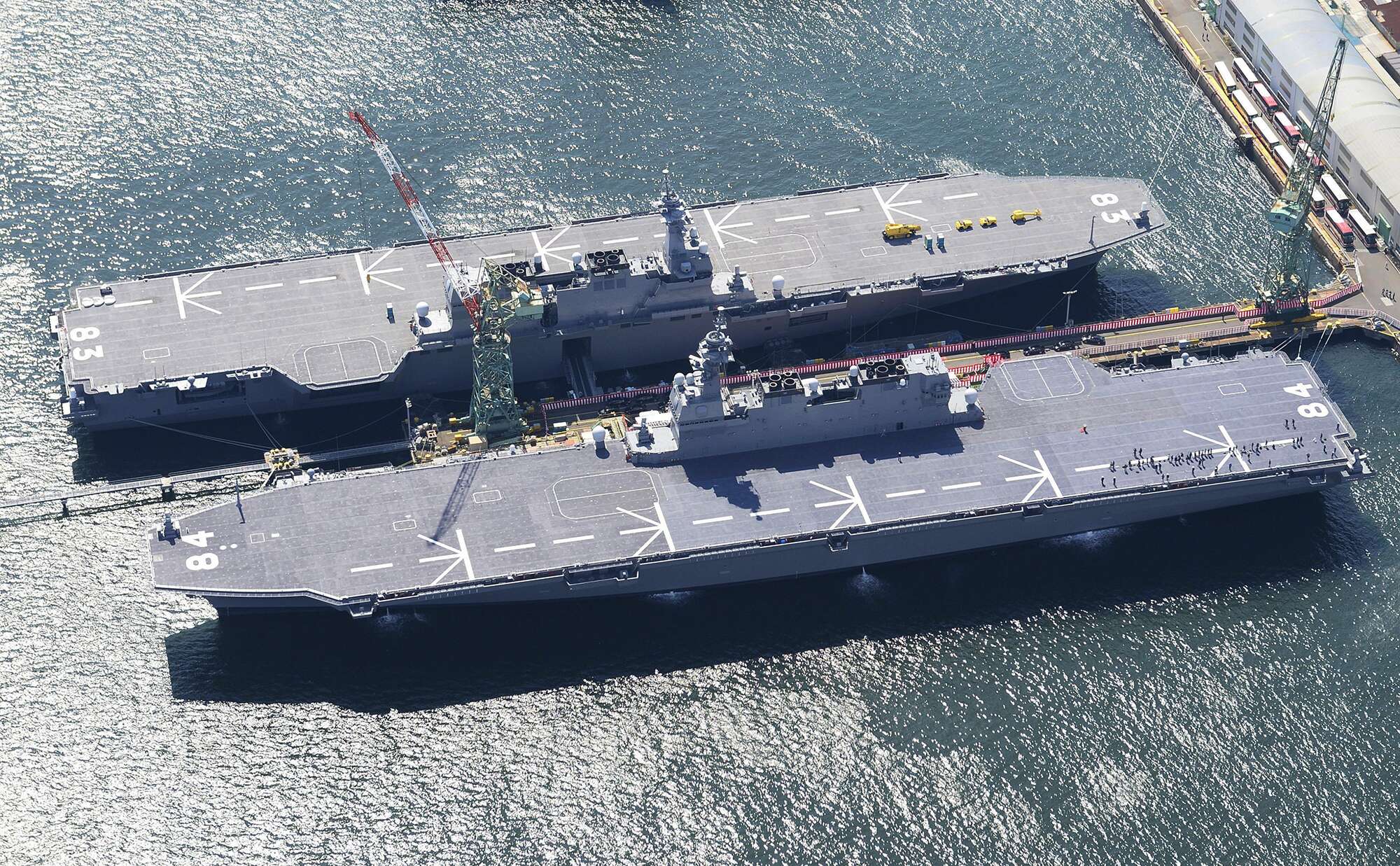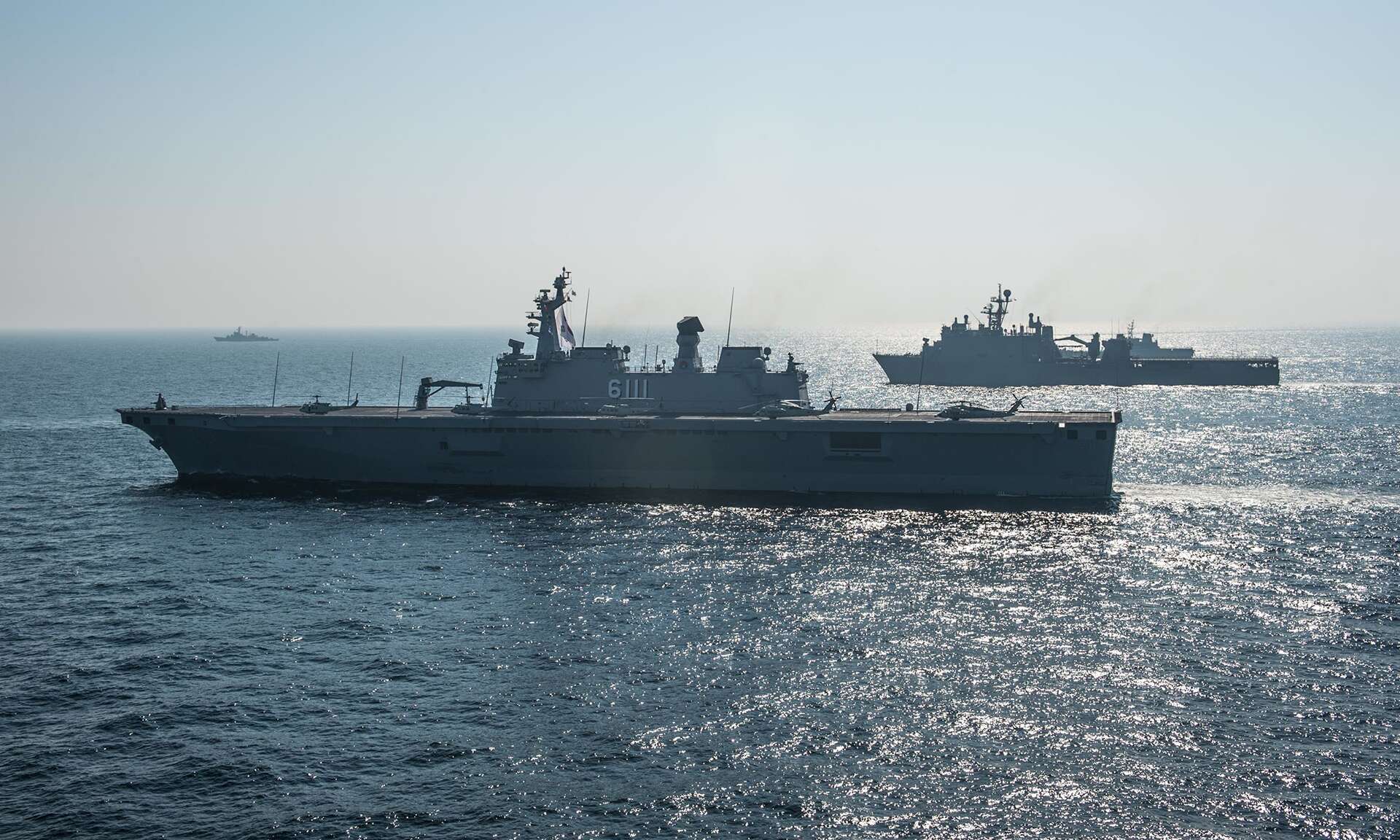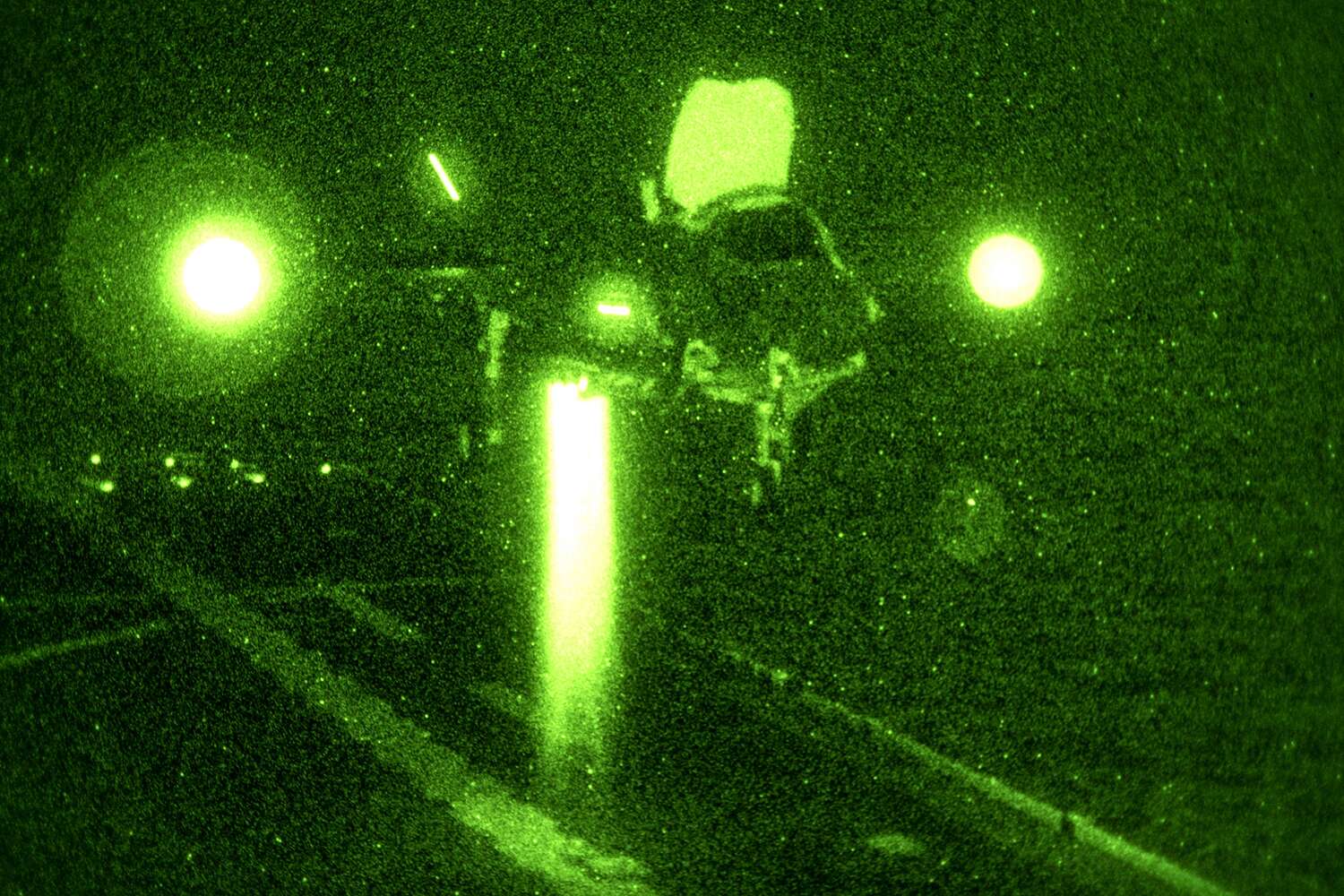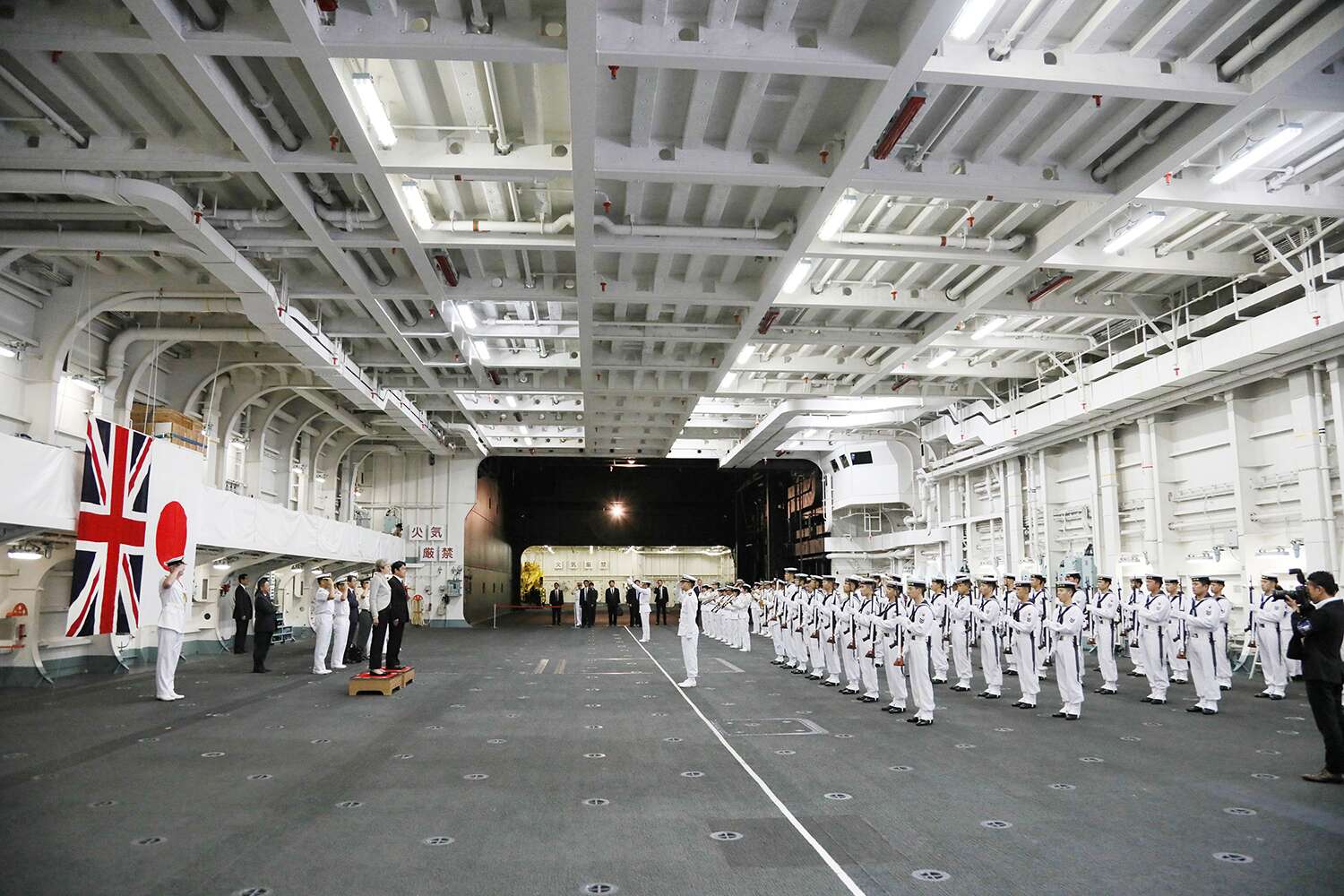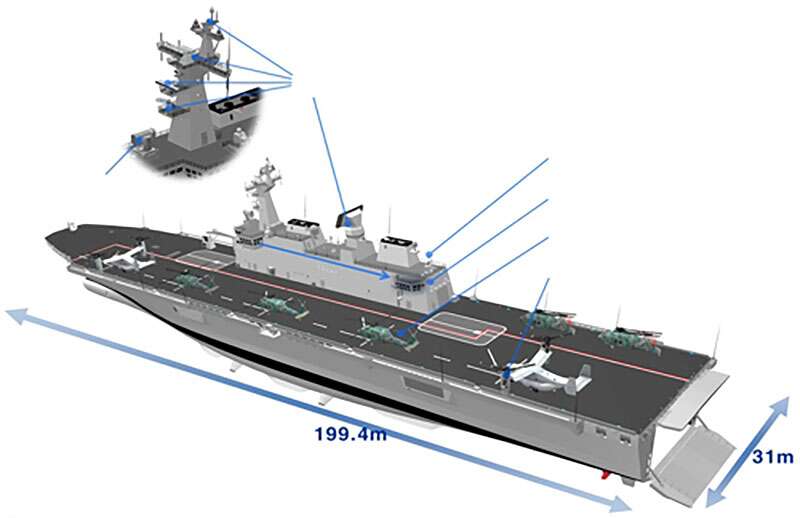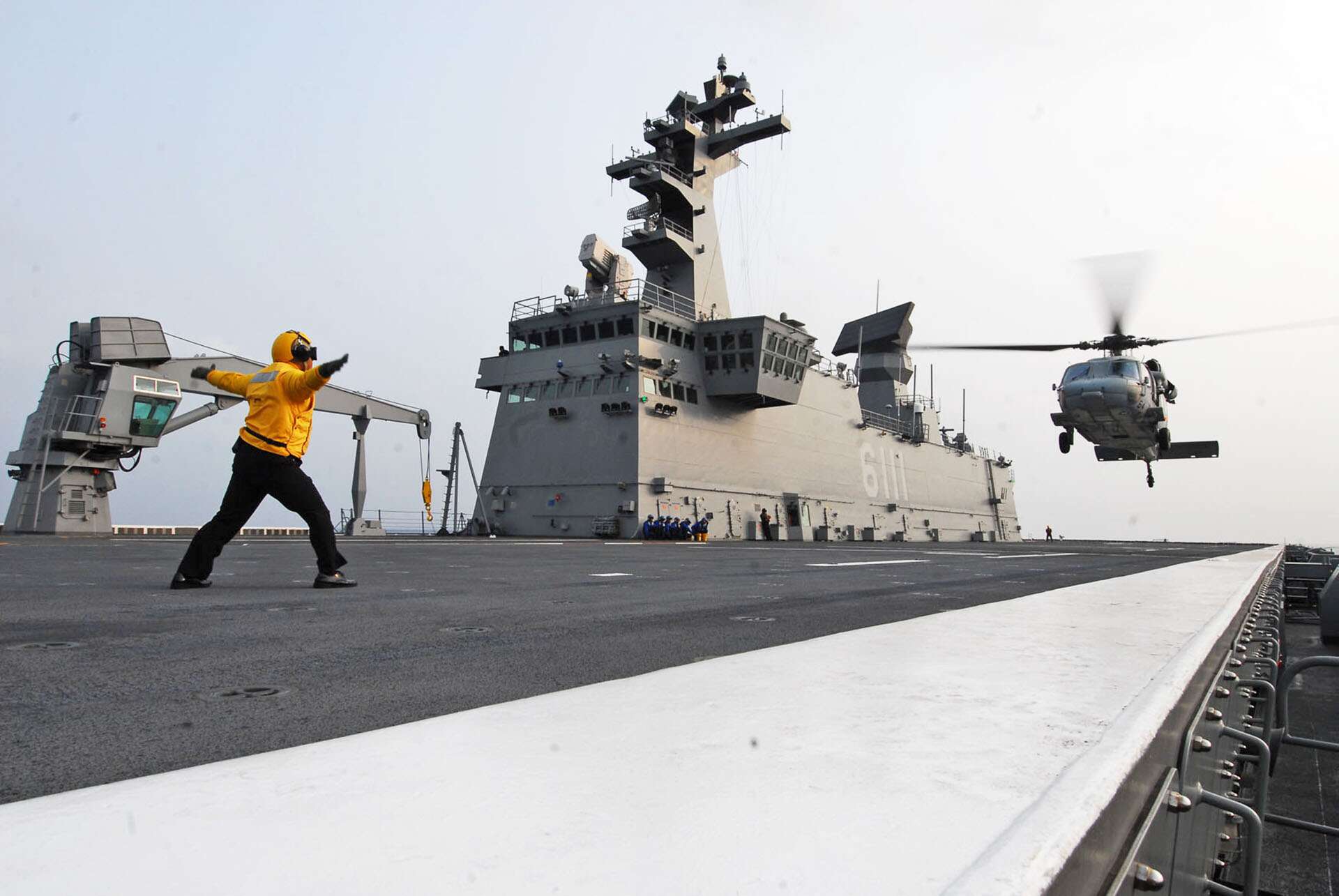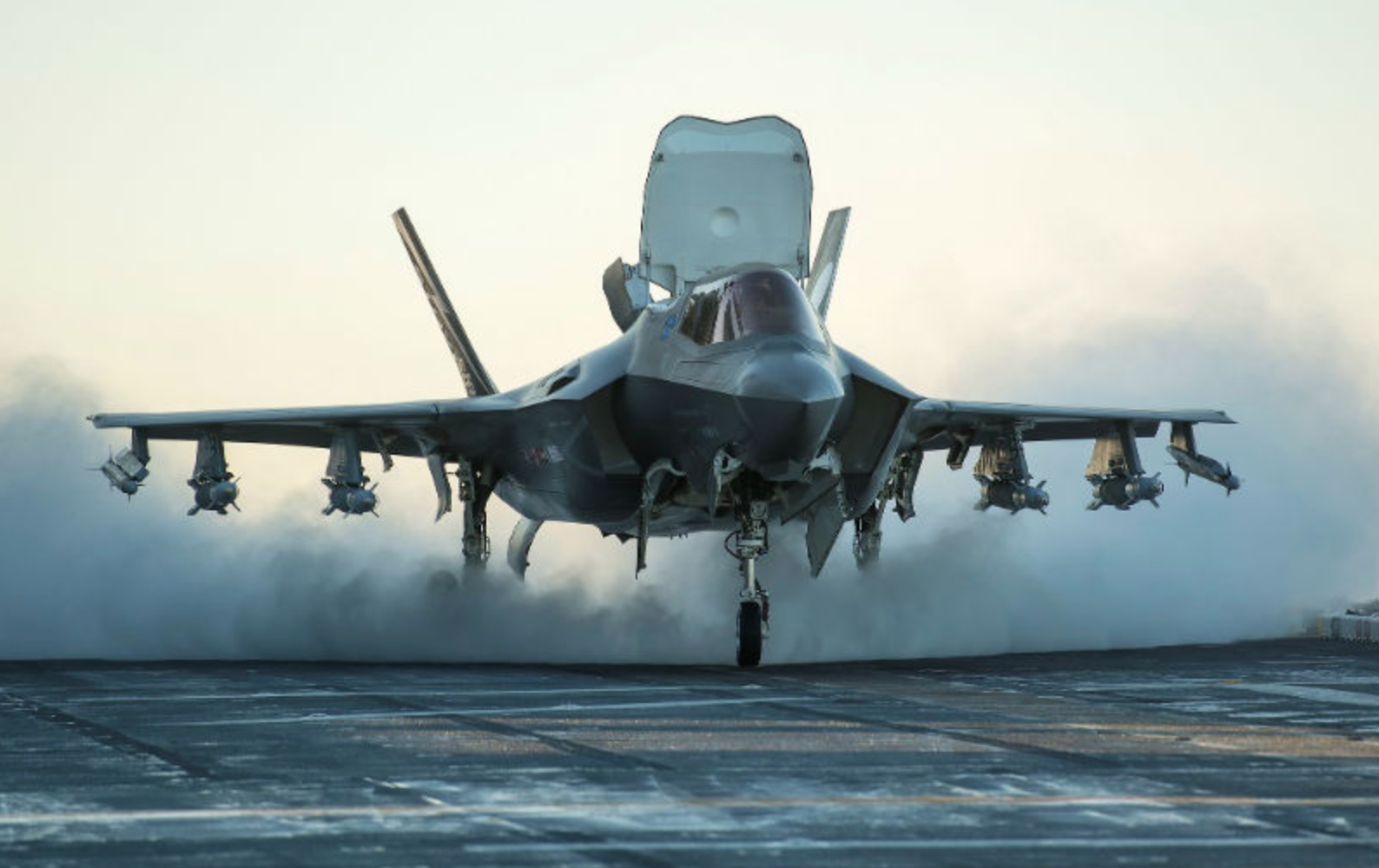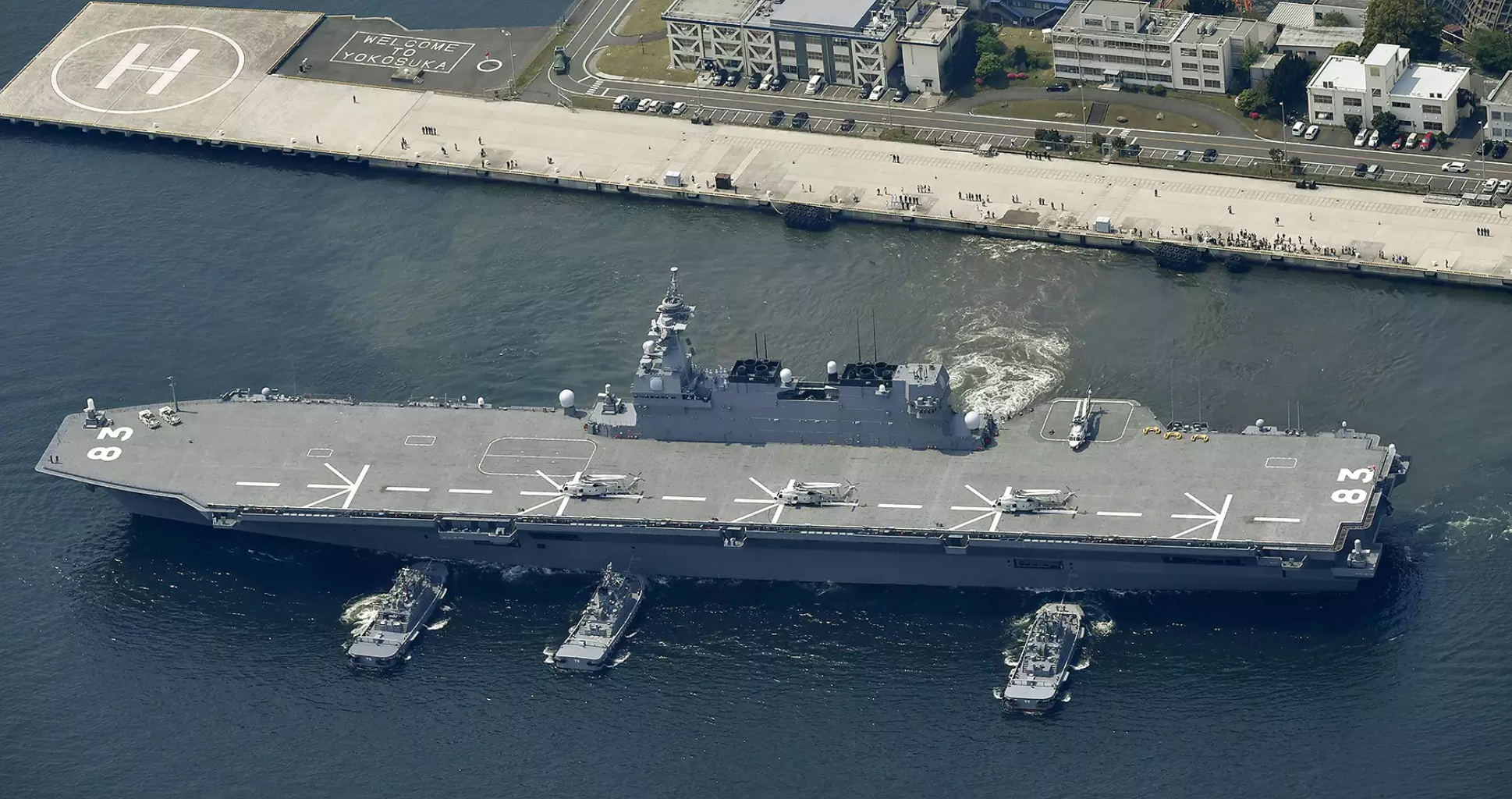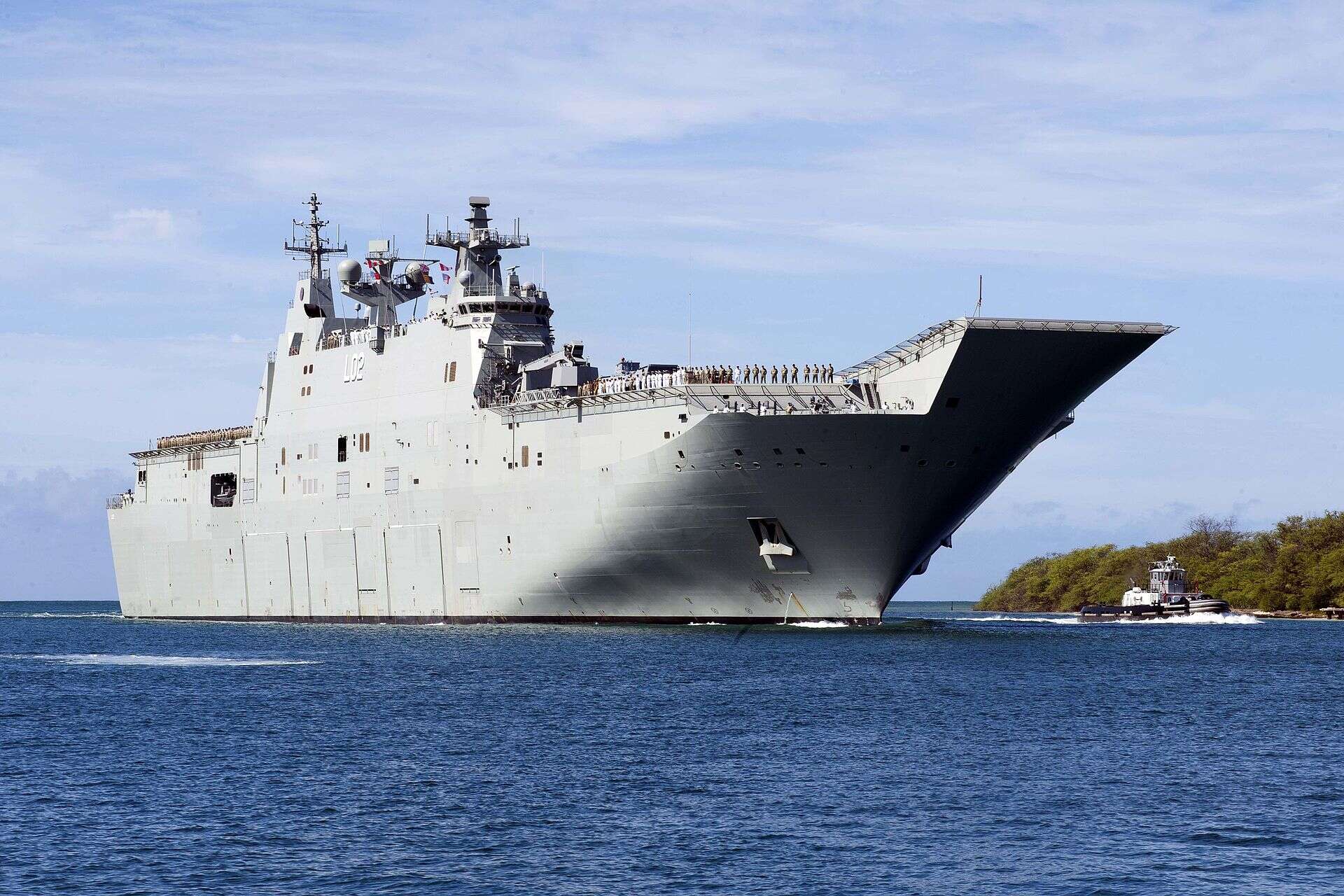http://www.thedrive.com/the-war-zon...korea-eye-f-35b-for-their-helicopter-carriers
Japan And South Korea Eye F-35B For Their Helicopter Carriers
The news comes as little surprise, especially for Japan, whose
hulking Izumoclass "helicopter destroyers" have always been
peculiarly outsized for their mission set and it's not as if Tokyo hasn't had its eye on such a capability for some time.
AP
Izumo and
Kaga, Japan's largest fighting ships that could potentially accommodate the F-35B.
South Korea's interest in the F-35B also isn't that shocking. The country's first amphibious flattop, the
Dokdo, is smaller than Japan's
Izumo class and it isn't clear exactly how capable the vessel would be of sustaining F-35B operations without a major refit. A second and updated variant of the
Dokdo design is now under construction. That vessel could possibly be modified so that it could handle a small cadre of F-35Bs in the future.
USN
ROKS
Dokto (LPD-6111) seen operating alongside its US counterparts.
Beyond the general dimensional requirements needed to house and operate the F-35B, other vessel-impact issues have to be taken into account as well. The aircraft's powerful and hot exhaust can severely damage a ship's deck unless it is specifically reinforced and coated with special materials. That same blast of hot and powerful gas can do damage anywhere on the ship it may pass over. So everything from catwalks, emergency life rafts, communications aerials, sensors, navigational aids, and other fixtures would need to be reinforced or relocated entirely.
LOCKHEED MARTIN
The
addition of a ski-jump is not necessary although it would improve the F-35B's takeoff performance and add an extra margin of safety. The
Izumo class, which presently includes two ships, was already designed with the F-35 and V-22 in mind to some degree, and its rear elevator and expansive hangar space can already facilitate movement of either type. Japan has already ordered the Osprey and that aircraft could be a
huge force multiplier for shipboard F-35B operations.
For either country, and for their own reasons, the F-35B could also offer the ability to execute highly dispersed operations independent of massive runways that will be at the top of an enemy's target list during a conflict (aka ballistic and cruise missile sponges). The F-35B can operate from small strips and reinforced concrete roadways during a time of war. In South Korea the demand for such a capability is extremely obvious as the
country's airports will be the top
targets for North Korean missiles and
special operations forces during a conflict. Japan, an island nation, could use the F-35B to disperse top-of-the-line air combat capability to remote and austere locations. This could be especially useful in the defense of the country's southern most islands.
AP
Just part of
Izumo's massive hangar deck
There may also be an opportunity for either country in the form of America's soon to be
surplus AV-8B Harriers. The Harrier is more compact and lighter than the F-35B that is replacing it, and its exhaust does not present the same compatibility challenges either. Obtaining a small fleet of these aircraft and introducing shipboard STOVL operations would be a far less expensive proposition as well. Turkey is presently
going down this exact path.
SOUTH KOREAN GOVERNNMENT
The
Dokdo's configuration.
Going the AV-8B route could be especially attractive option for South Korea, whose smaller helicopter harriers are better suited for the design and are more focused on amphibious operations in North Korea.
USN
A SH-60 landing aboard ROKS
Dokto (LPD-6111).
If Japan chooses to go down the STOVL route for its
Izumo class carriers, it would mark the first time since 1945 that the country has had an operational aircraft carrier capable of fielding fixed-wing aircraft. It would also be among the most glaring diversions from Article Nine of the country's constitution that drastically limits its offensive warfare capabilities.
Japan has gone out of its way to refer to the big
Izumo class carriers, and their
Hyuga class predecessors, as "helicopter destroyers" because of this issue. But there is no doubt that Japan's military stature has began to morph in recent years, and
especially over the last year, as the threat posed by North Korea
has grown significantly. Tokyo's emerging hunt
for long-range cruise missiles is just another indication of this monumental strategic shift.
This hotly debated change has largely occurred piecemeal, but supposedly Japan will officially address the legality of these changes and its overall strategic aim in its upcoming National Defense Program Guidelines, which is supposed to be published sometime next year.
LOCKHEED MARTIN
F-35B with a full external load-out operating from the boat.
It would be a good move for either country to procure the F-35B, or used Harriers, for shipboard or dispersed operations. As I have discussed in
great detailed over the years, the F-35 A and C models' design was impacted negatively on virtually all levels to accommodate the B model's STOVL requirement. With that in mind, by purchasing even small numbers of B models, operators of the A variant can achieve the benefits of the B model's unique capabilities to offset the performance sacrifices paid by their A model fleet.
This may seem like somewhat of an abstract concept but it is a key argument for the jet when it comes to its Pentagon service. The B model, which will only make up roughly 15 percent of the entire F-35 production run, but has penalized the rest of the fleet due to the design compromises it inflicted, is giving America's total force basically double the number of
5th generation fighter carrying "first day of war" aircraft carriers than it had prior. The B model also offers the potential
for highly dispersed operations in areas where traditional stealth fighter aircraft would likely be unable to operate. This capability will develop over time but it would be highly prized during a peer-state conflict in vast and very dangerous Pacific theater.
AP
Izumo docking.
Both South Korea and Japan could also leverage some of these same synergies and benefits by retooling the ships they already have even for low density F-35B operations, or by taking advantage of cheap Harriers with lots of life left in them that will be put on the auction block due to the F-35B entering widespread service with the USMC. Either way, these countries will benefit from the existence of the F-35B.
If Japan and/or South Korea move ahead with fielding the F-35B, Australia would likely follow suit as they have a pair of ships that are even better prepared to operate the stealthy strike-fighters—the
Canberra class landing helicopter docks. These vessels are license-built iterations of Spain's
proven Juan Carlos class design and were constructed with ski-jumps for operating STOVL jets even though the Royal Australian Navy said they had no intention of procuring them at the time.
USN
HMAS Canberra.
Now that Australia is set to receive a large fleet of F-35As (72 aircraft planned and that number could grow), introducing the F-35B to their already owned and operated carriers seems almost inevitable. Once again, the Harrier could also be an option here as well, but seeing as the country is a major F-35 customer already, and is set to remodel their entire air combat capability, going for the latest and greatest option seems more likely.
All this is happening as
China and
India work to rapidly build-up their own fixed-wing aircraft carrier capacity. With this in mind, the coming decade could see the strategic naval balance in the Pacific region being heavily dictated by whose carrier strike groups can do what and where.



